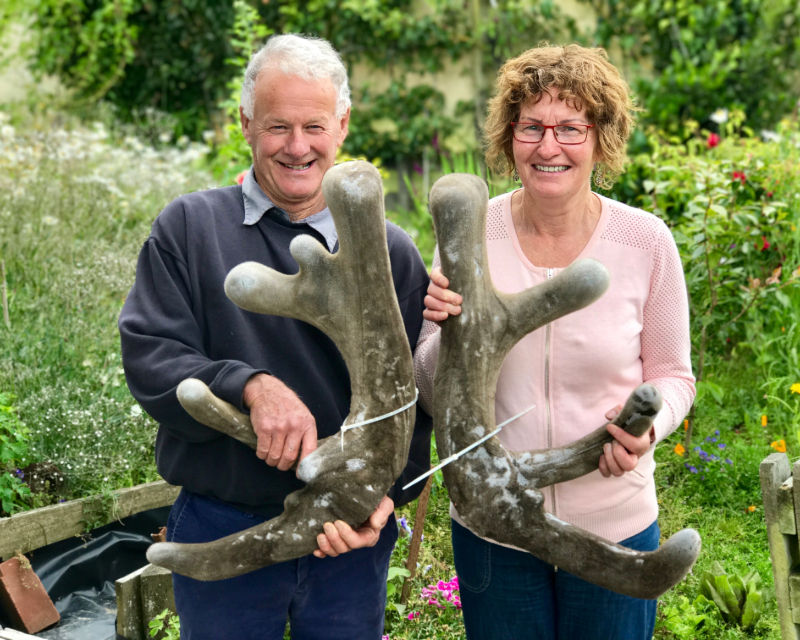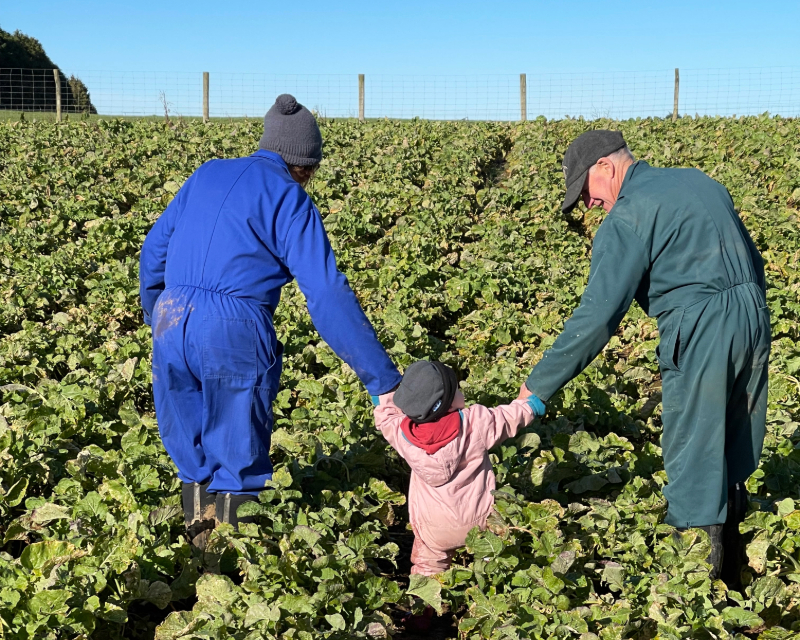Pourakino deer farmers embrace farm plans

John Watkinson has finished the velveting for the season and says his fingers are just about coming right.
It’s a fiddly-sounding process – involving safely removing the antler above where a tourniquet is tied on to ensure the animal’s welfare – and when you replicate it across hundreds of animals, it’s understandable that your hands could be pretty sore.
The velveting is done under strict animal welfare and food safety conditions. John and wife Liz have been on the Pourakino Valley farm, near Riverton, just shy of 60 years.
After sheep farming for 35 years, they converted to deer in the early 2000s on their 530 acres, with about 1400 deer. John trapped the original wild deer.
They are one of relatively few deer farmers left in the immediate area, with much of Southland’s deer farming in northern Southland.
It’s a two person operation, plus the occasional family ring-ins to help with a task or two. Deer are very different to farm compared to sheep or cows, John says.
“You’ve got to give them space and expect the unexpected. There’s quite a few characters.”
Deer are very social animals amongst themselves, but people are well advised to keep away when the stags are roaring.
“When you’re lambing, you’re working every day in it, but with fawning it’s up to them, and you leave them alone.”
The deer industry like many had its challenges during Covid when the restaurant market took a downturn, but retail venison sales have picked up since then.
The Watkinsons operation is about 75% venison and 25% velvet.
Their venison is processed by Duncan NZ Venison, near Mosgiel, with about 650 animals going out the farm gate each year.
The velvet mostly goes to China for further processing, but markets can be a bit volatile.
So, how often do they eat venison?
“All the time,” John says, laughing.
His favourite way to cook it is quickly in a really hot cast-iron pan.
John loves the challenge of bringing everything together to get the result on farm – as every little job has its reward. Management and planning, and having a Plan B are also pretty important, he says.
And like many farmers, most of that knowledge was in his head.
The Watkinsons belong to the Pourakino Catchment Conservation Trust and are members of Deer Industry New Zealand (DINZ).

A couple of years ago DINZ had funds to pay for the development of a farm plan, while Ballance helped them put the plan together.
It was an informative process and having someone come on farm and help with it was quite a good learning experience, he says.
“It’s a useful exercise.” Using his smart phone more as a farm tool and having more of a plan around riparian planting were two things he got out of it – and if he’s worried about something he’s doing, he will have a look at the plan.
Making sure plans are straightforward and farmer-led is important, he says.
“They’re the ones doing the groundwork and they know their land,” Liz adds.
All the planning in the world, including winter grazing best practice, couldn’t really help much when confronted with a spring like the “relentless” one just experienced in Southland, he says.
“You try your best and hope like hell,” John says.
During one storm, fences were down, and deer congregated into a herd of about 800, which then had to be sorted out.
The picturesque Pourakino River runs along the boundary of the farm, with the Longwood Forest Conservation Area on the other side of the river, a great place for a walk when you want to recharge the batteries, John says.
John and Liz’s farm was formerly the site of the More and Sons Sawmill, which operated through to about 1960. At one time there were 24 houses to house the mill workers, and a school and many sheds.
Notably, the ‘Black Maria’ steam locomotive that transported logs from the Longwoods through the Pourakino Valley to sawmills at Riverton and Otautau ended up buried on the property. It was dug out in the 1970s, then restored, and is now on display in Riverton.
“It’s good where they’ve got it now,” John says.
Bits and pieces from the mill and trams decorate corners of the flower garden now.
John and Liz love the lifesyle and the relative ease of working with deer is one thing that has kept them in the industry.
They encouraged their four children to pursue their own career paths, which at this stage does not include farming.
They have had a couple of conversations with people about leasing or selling, but nothing concrete to date, John says.
This is where the farm plan is really useful, as some of its value is that the information is there if someone else needs it, John says.
For the meantime, John and Liz are happy to keep on trucking, splitting their time between the farm, spending time with family, lots of walks and maybe even the odd ‘half hour siesta’ here and there, too.


